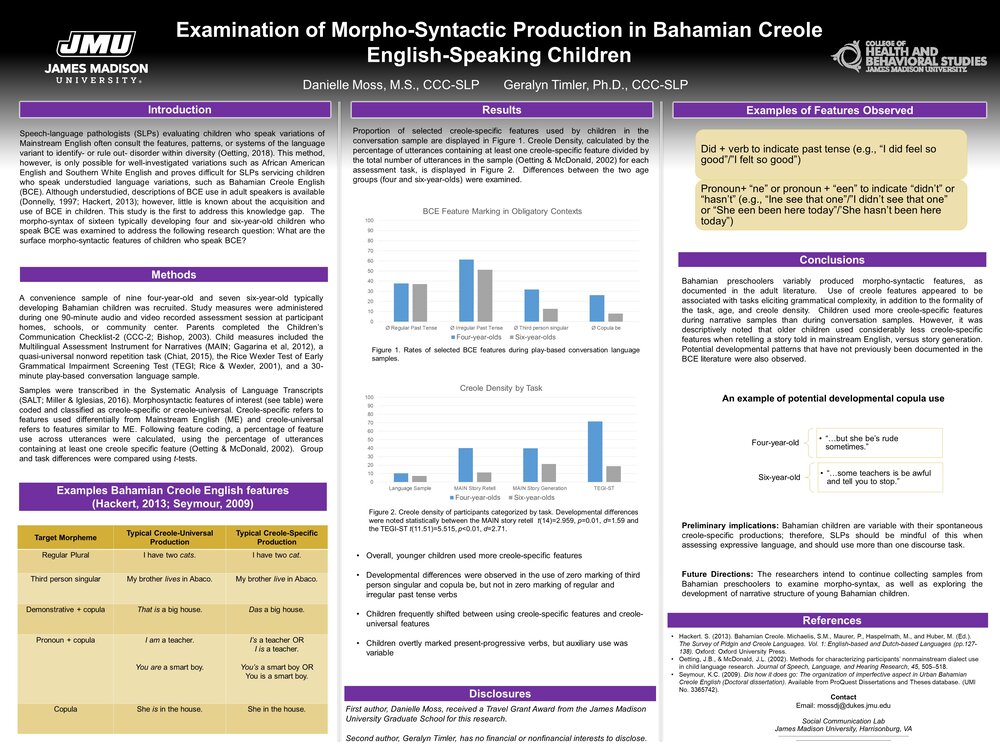Examination of Morpho-Syntactic Production in Bahamian Creole English-Speaking Children
Communication Sciences and Disorders: PhD
Advisor: Geralyn Timler, Ph.D., CCC-SLP
When speech-language pathologists (SLPs) evaluate for a language disorder (LD), they often assess a child’s syntax and morphology (i.e., sentence structure) to identify LD associated clinical markers. These markers can vary from the mainstream language depending on the child’s language use or variation. Therefore, SLPs need to understand the features of children’s language systems when determining LD, as it reduces the risk of underdiagnosing or overdiagnosing children (Bland-Stewart, 2005). This method, however, is only possible for well-investigated variations and proves difficult for SLPs servicing children who speak understudied language variations, such as Bahamian Creole English (BCE). This pilot study investigated the morpho-syntax of sixteen typically developing four and six-year-old Bahamian children who speak BCE. Methods included the administration of the Children’s Communication Checklist-2, the Multilingual Assessment Instrument for Narratives, a quasi-universal nonword repetition task, the Rice Wexler Test of Early Grammatical Impairment, and a 30-minute play-based conversation language sample. Language samples were transcribed and coded using the Systematic Analysis of Language Transcripts. Bahamian creole-specific (i.e., different from SE) and creole-universal (i.e., similar to SE) morpho-syntactic features and differences across assessment methods will be reported. Developmental differences will also be described. This study was partly funded by The Graduate School at James Madison University.

